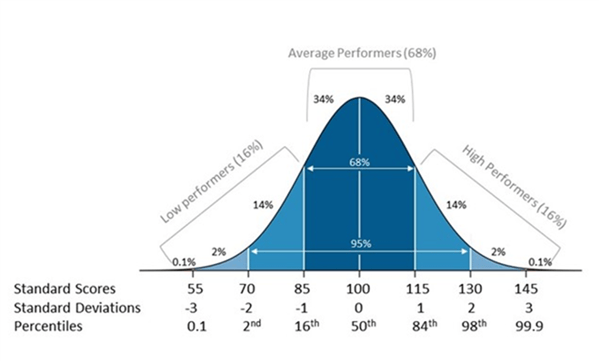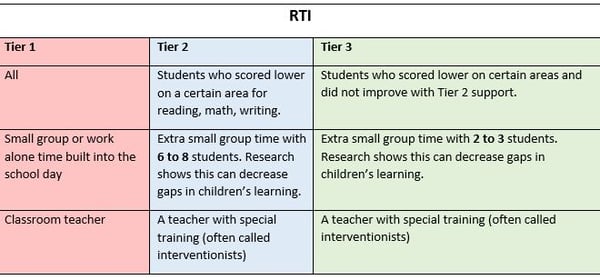What is Response to Intervention (RTI)?
RTI is a system that gives extra help to students who are struggling in reading, writing, and math. This gets students the extra help they need sooner, so they can do well in school.
How do I know if my child needs RTI?
In public schools, students take screening tests 3 times a year.
- Some types of these tests are STAR, MAP, Fastbridge, DIBELS, and AimsWeb.
- Tests are done in fall, winter, and spring.
- They help find students who might need extra help.
- These tests give a score, usually a percentile rank. Scores below the 25th percentile may mean a student needs extra help.
- Talk to your child’s teacher to learn more about their scores.

*red arrow shows 25th percentile and lower
How does RTI work?
All students’ academic progress is closely watched. This helps to find students who need extra support. Listed below are some ways students can be supported. Each student is watched to see if they improve with support. This is called progress monitoring.
The support may look different in each school and district. There are 3 tiers of support.
Will my child need an Individualized Education Plan (IEP)?
Sometimes parents feel their child needs an IEP. RTI often offers stronger intervention than is provided in special education. For many it is enough to address early delays in subject areas, like math, writing, and reading. If a child continues to struggle in reading, writing, or math, after completing two rounds of intervention, they may meet criteria for an IEP. They have to complete two rounds of interventions before they can be evaluated for an IEP.
For more health and wellness information check out this resource:




